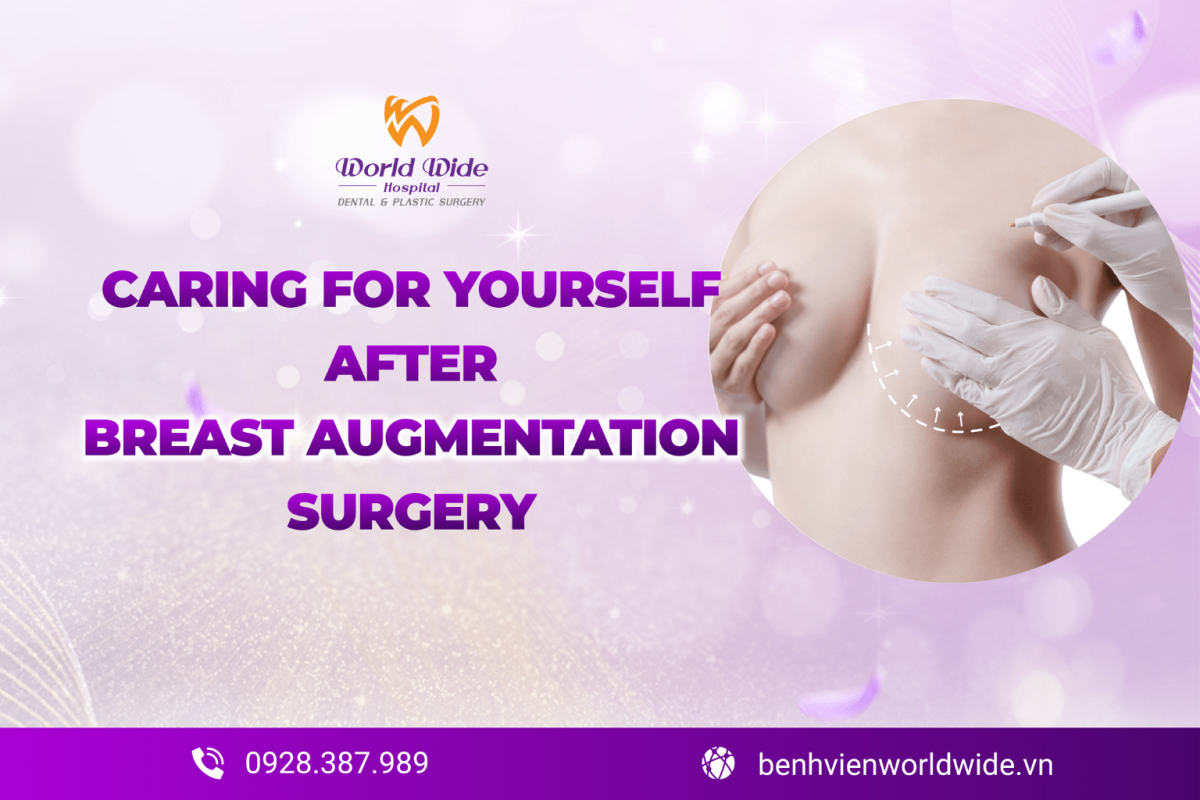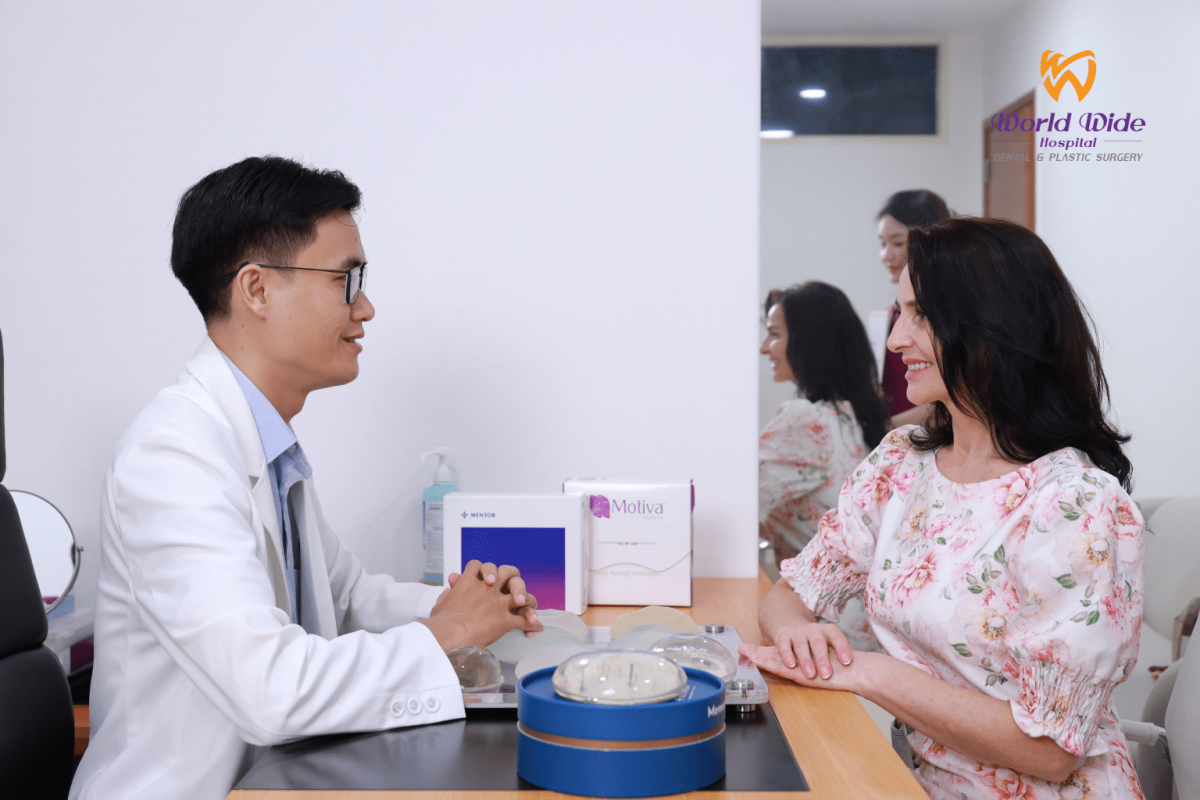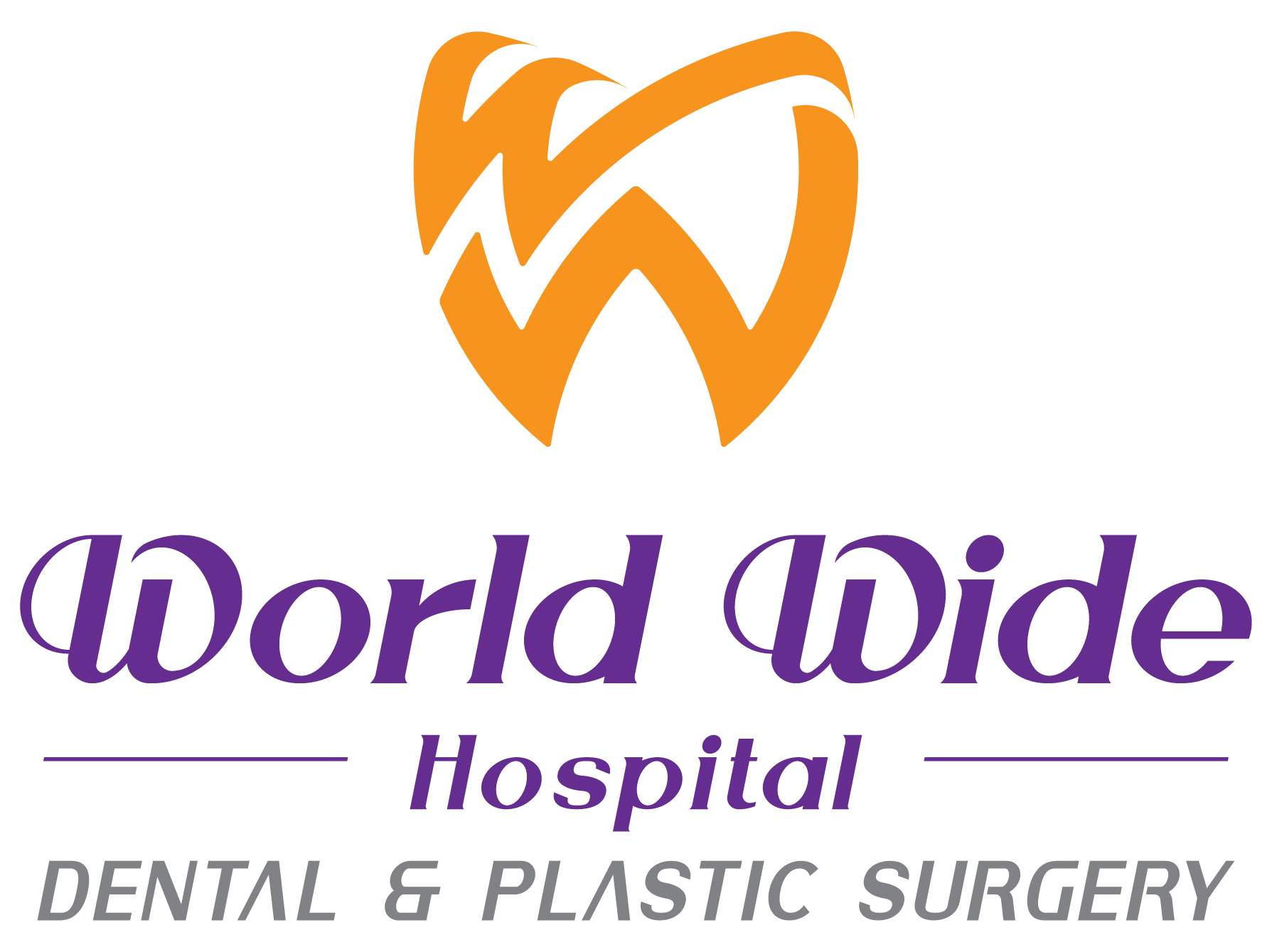
- After your surgery, you will stay at Worldwide Hospital for 1 night. You will have a gauze bandage covering your incisions (surgical cut). You may have a drain that’s inserted in incisions to drain the fluid from your surgery. The nurse will remove this for you within 24 hours after surgery.
- During recovery time, your breasts may feel tight, numb, tingly, sensitive or swollen for several weeks after surgery. If you had breast lift, your breasts could feel hard for 3-6 months. If you had work done around your nipple/areola, there might be spot bleeding for a few days at the incisions. For most patients, any swelling will have gone down when reaching the 3 week mark post surgery. From six weeks onwards, your breast implants should begin to feel more natural. However, it’s normal to experience some swelling for up to three months.
- You must wear the compression bra continuously for the first month after surgery (except for when showering/cleaning incisions). If you had breast lift, the compression bra needs to be worn for 3 months. Every 4-5 hours, you can take the compression bra off for about 10-15 minutes to let the skin breathe. The strap helps fight forces of gravity immediately after surgery and helps improve any swelling. After the required period, you can wear the compression bra (or sport bra) for as long as you can (usually at night for convenience) as this prevents sagging.
- You will need to put on the gauze bandage until stitches removal. Replace this gauze a few times a day. This will also help protect the incisions against the compression bra.
- After surgery, you should try to move around and do gentle stretches for better blood circulation and to keep your muscles agile.
- You will have limited mobility for at least one week following your surgery, so avoid participating in a lot of activities.
- Avoid bending over, lifting and strenuous activity for four (4) weeks. At four weeks you may begin walking (lightly). You can only resume normal exercise after 12 weeks. Be careful when using a towel, be gentle around the scar area.
- For breast lift, to create a natural fold under your breast, your doctor placed sutures (stitches) under your skin that you won’t see. They will dissolve on their own and don’t need to be removed. These sutures may cause you to feel a pinching or pulling sensation and can be painful. If you have any pain, take your pain medication.
- Avoid highly processed foods, high-fat fried foods, sugary treats, drinks, as well as a diet high in salt is key to a faster and smoother recovery time. Fluids are still crucial, so drink up, eat well, and sleep often to get the best possible results from surgery. Avoid eating foods that may cause allergy.

- Avoid alcohol and quit smoking until at least a month after surgery.
- Women who have undergone breast enlargement surgery should seek an MRI scan every few years after surgery as a precaution.
Breast augmentation recovery stages
| Week 1 | Discomfort and swelling is expected.
Bruising is likely to appear. Pain killers may be needed during this stage (avoiding aspirin). |
| Week 2 | Bruising remains stable.
Pain is at its worst in the early morning and is less common during the day. |
| Week 3 & 4 | The vast majority of swelling subsides.
Occasional pain is expected at night, skin numbness is common. Nerves will begin to wake up in the breast tissue, causing a pins and needles sensation in the nipple area. |
| Week 5 & 6 | The remaining 20 percent of breast healing takes place during this period. |
| Week 7 | Your breasts will feel softer and more natural.
Scar tissues progressively relax and fade. |
Shower & Care for the incisions
Until stitches removal, clean the skin incisions with normal saline (Natri Clorid 0.9%) and sterile compresses three times per day starting the day after surgery. It’s important to clean any dried blood and dead skin cells from the incisions.
You can take showers after 2 days, but avoid pointing the water stream directly at the incisions and do not get soap on the incisions and until after stitches removal. We do provide hair washing service at our hospital if it’s hard for you to wash your hair. After stitches removal you can take full shower but be gentle around the incisions.
You can use lotion as long as it doesn’t cover the incisions. After stitches removal you can put on normal skincare products. After all stitches have been removed, use scar cream as directed by your doctor/nurse. We recommend using Stratamed cream twice a day. Make sure you clean the incisions before putting on the cream.
Any scars should be kept out of direct sunlight and artificial UV for around one year, as skin in this area is much thinner and prone to burning which can result in permanent scarring or discoloration. Use sunscreen with SPF 30 or more.
Follow-up appointments

- You will need to see the surgeon for checkup day 1 and day 3 after surgery. Your stitches will be removed between 7 to 10 days after your surgery. Your nurse will make these appointments for you and will inform you if more appointments are necessary.
- It is crucial that patients attend all of their required follow-up appointments. During these visits, the surgeon will evaluate your healing progress and make ongoing recommendations regarding your recovery. Our nurse will change your bandage and clean the surgery sites for you at each follow up appointment.
- Besides these mandatory appointments, you are welcome to stop by the hospital anytime if you want our nurse to care for the incisions for you.
Antibiotics
Please take the antibiotics as directed. Make sure you finish the antibiotic even if you feel like you are completely better and do not need it. Discontinue antibiotic use in the event of a rash or other unfavorable reaction, and notify the hospital of the reaction.
If you have the following symptoms, please call for assistant at +84 (922253888): a fever of 100.4° F (38° C) or higher, shaking chills, nausea, vomiting, increased pain, swelling, and redness at your surgical sites, continuous drainage from your suture lines, separation of your suture lines, sudden shortness of breath or trouble breathing, any unexplained or unexpected symptoms.

 Tiếng Việt
Tiếng Việt